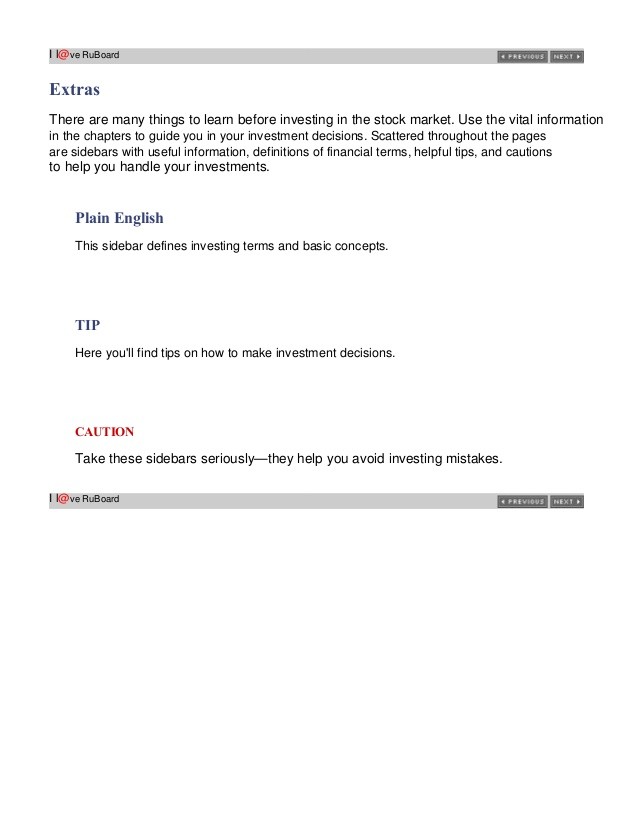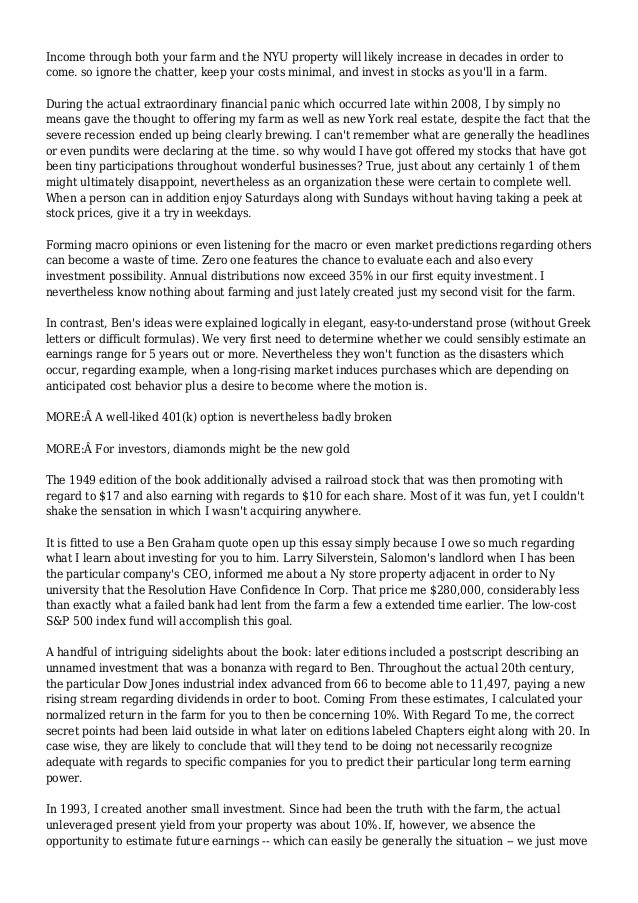Domain Investing What You Can Learn From the Stock Market
Post on: 22 Апрель, 2015 No Comment

07|18|2007 07:44 am EDT
Domain Investing: What You Can Learn From the Stock Market
by Tim Schumacher in Categories: Miscellaneous
Aaron Wall recently compared the ROI of Online vs. Offline investing by comparing building websites to building rental units. The following article,which comes to us from the Sedo newsletter, the authors compare domain investing to the stock market.
Syndicated from the Sedo newsletter, by Tim Schumacher. Mara Miller. and Edie Abigail Dover at Sedo.com
There are many similarities between investing in domain names and investing in the stock market. With stocks, you earn dividends and with domain names, you can earn parking revenue from natural traffic. With a multitude of investment opportunities to choose from, speculating on domain names is a fairly recent occurrence. The concepts and theories behind domain investing, though, are the same as those of more traditional ventures.
It is important for any serious domain investor to understand the significant relationship between investing in stocks and investing in domains. Stocks provide dividends and the potential for capital growth. Similarly, domains provide revenue and growth potential. Domainers can earn revenue from domains through parking (similar to a stock′s dividends) and sell them for profit (similar to the way capital growth is expressed in the stock market). While the longevity and popularity of the stock market has provided the opportunity for a plethora of research and analysis, the relatively new domain investment market may need many years until it catches up in terms of research.
First, let us look at what drives valuation of both stocks and domains. The main factors determining the value of a domain name are:
- (Future) resale value: Domains with the greatest resale value are those that are catchy, short, and have good advertising and branding potential. They should also have a common top level domain (TLD) such as .COM. If a domain has all those characteristics, there′s a high likelihood that someone will buy a name at a premium in the future. However, the emphasis is really that this is future growth potential!
- (Current) Traffic: The quantity and quality of traffic influences the value of a domain. The more valuable traffic a domain has, the more revenue it can generate right now, as a domain’s natural traffic can be monetized through parking programs such as SedoPro. Domains are often sold in multiples of the domain’s annual revenue.
If you look at the stock market, two major forces also drive the valuation of a stock:
- (Future) growth: A company which will be able to grow fast (and make profits in the future) is valued higher than a low-growth company.
- (Current) profits/EPS: A company which is more profitable is valued higher than a low-profit-company.
Mapping those two value drivers into quadrants, we can see four major classifications in equity investments as well as to four major classifications in domain names.
- Dividend Stocks (e.g. Tobacco) Stocks that have high profits, but low growth potential. These are similar to Typo Domains (e.g. realestaet.com [sic]) because, while often profitable, typo domains are not the most sought after for branding and the growth is limited.
- Takeover Targets (e.g. Chrysler) Stocks that have both low growth and profits. In the domain world, these are called Junk Domains (e.g. myjunkdomain.net). Junk domains earn lower parking revenue and do not have much value in an aftermarket.
- Stars (e.g. Google) Stocks with both high growth rates and earnings. High Traffic Generic Domains (e.g. games.com) are most closely associated with this kind of stock. These domains earn the most revenue in parking and have the highest resale value overall.
- Growth Stocks (e.g. Biotech)– Stocks in rapidly expanding companies with little profit. These companies have a low price per earnings ratio (P/E). Brand Name Domains (e.g. vodka.com) are most similar to growth stocks. Initially, they don′t have any profits, but future branding and resale value is high.

If we look at a graph comparing classifications of stocks to domains, the similarities may be a bit clearer. The stock characteristics have been mapped out on the graph on the top, showing profit and growth potentials. The bottom graph translates this relationship to domains with profit potential (P/E) translating to traffic (or earnings). Stock growth in the top graph relates to brand or resale value in the bottom graph.
At first glance, you might think the stars have the highest price to earnings ratio (P/E) with both high profits and growth rates. However, analysis of P/E shows growth stocks leading in potential and takeover targets at the bottom with a lower P/E. Purchasing growth stocks can certainly pose a risk with their high growth potential and low immediate profits, however many are rewarding in the long run.
When applying this profit and growth analogy to domain names, the most sought after domains are high-traffic, short names, such as games.com. These have a lower price/earnings ratio than potential brand domains because initially brand domains may not receive valuable traffic.
The Domain Dividend
Revenue from a stock is called a dividend. Similarly, a domain name earns revenue over a period of time by parking. If you have a domain with traffic revenue of 0.02 USD per day, that adds up to 7.30 USD per year. With the average renewal fee of 6 USD, the domain has a positive return on investment, taking care of its own renewal fee. This means that even a domain with a relatively small amount of traffic has the potential to make some revenue.
Diversification and Internationalization
Just as diversification is a key element to the success of a stock portfolio, savvy domain investors leverage their risk with diversity. An economics guru would cite the Markowitz Portfolio Theory/Modern Portfolio Theory (MPT) which focuses on diversifying a portfolio as a way of reducing risk and increasing returns.
Among a balanced stock portfolio (although home bias may be apparent), you will see portfolios containing fairly stable stocks such as Coca Cola, new technology stocks (e.g. Yahoo) and domestic/international stocks. A similar mentality has developed with domain investors. As familiarity with the market increases, domain investors are not just investing in .COM domains, but have experienced success with branching out and adding an array of generic top level domains (gTLDs) such as .INFO. NET, and .BIZ. Also included in the selection may be country code top level domains (ccTLDs) including .US. CO.UK. DE and .TV. Even sponsored top level domains (sTLds) such as .MOBI are included to diversify and internationalize domain portfolios.
The .DE and .CO.UK ccTLDs are especially strong, with the .CO.UK domain showing a phenomenal increase in sales volume of 153% from 2005 to 2006. As a result of much backing and support, the recently released sTLD .MOBI, is expected to continue its strong presence in the domain market. With the land rush (registration) beginning less than one year ago, there have been record sales of .MOBI domains sold on the Sedo marketplace. As increasing numbers of individuals rely on cell phones for information and companies develop more mobile friendly web pages, the .MOBI market is expected to show continued growth.
What does this mean to you‾ If you follow a lead from stock market trends, a well performing domain portfolio may contain both .CO.UK and .MOBI domains.
The graph on the right shows that over time, a stock portfolio of only U.S. stocks will have a return below 13% and a standard deviation, which measures volatility or risk, of about 16. Similarly if you invested in only .COM domains and they diminished in value, your portfolio would be negatively impacted. In comparison, a portfolio of 100% foreign stocks would have a much higher potential return at 15%, but also a much higher standard deviation and risk of 22. However, an equal mix of US and foreign stocks will have an expected return of 15%, halfway between the expected returns with either a 100% U.S. or foreign portfolio. Furthermore, at a standard deviation of 14. The volatility, or risk, is much lower than an undiversified portfolio. An optimal stock or domain portfolio holds a mix of both risky and stable investments with short, long, and average growth expectancies, thereby balancing risk and return.
Higher Sophistication, Lower Transaction Costs
Higher technological sophistication and decreasing transaction costs have facilitated the transition to diversification and internationalization of stock and domain portfolios. Just as the stock market has made progress over the last 80 years with regards to technological advances, domainers are enjoying increasing benefits in terms of parking and selling. Newer parking additions allow users to have a better idea of the value of a domain′s traffic. Increasing technology at the registrar level is also leading to lower transaction costs. This means 3 things for domain investors:
- Better traffic tracking and valuation
- Lower transaction costs (Sedo has lowered transfer fees for many TLDs from $150 USD to $50 USD)
- Lower registration costs (in 1995, the average cost to register a .COM was near $70 for a 2-year registration. A .COM can currently be registered at 1&1 for $5.99 per year)
Recommendations
Buy low, sell high! We’ve all heard that phrase long applied to the stock market and now also to the domain market. As with any investment, remember to do the research, look at the growth potential (traffic and branding potential), see what similar domains are selling for, and don’t forget to sell and reinvest when the time is right!














